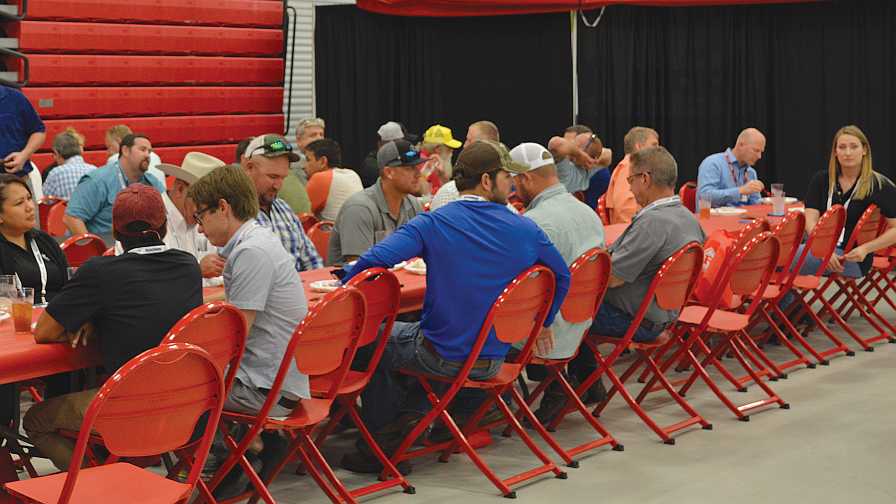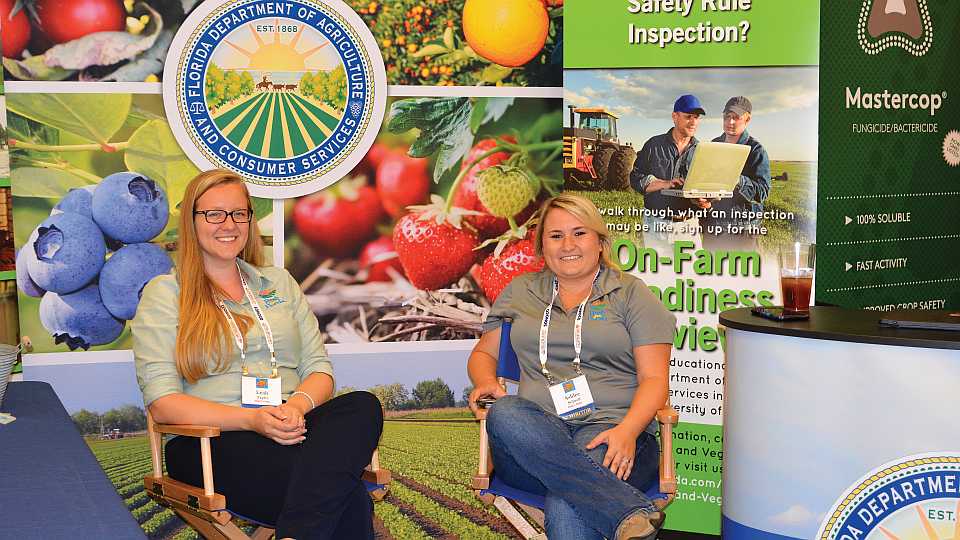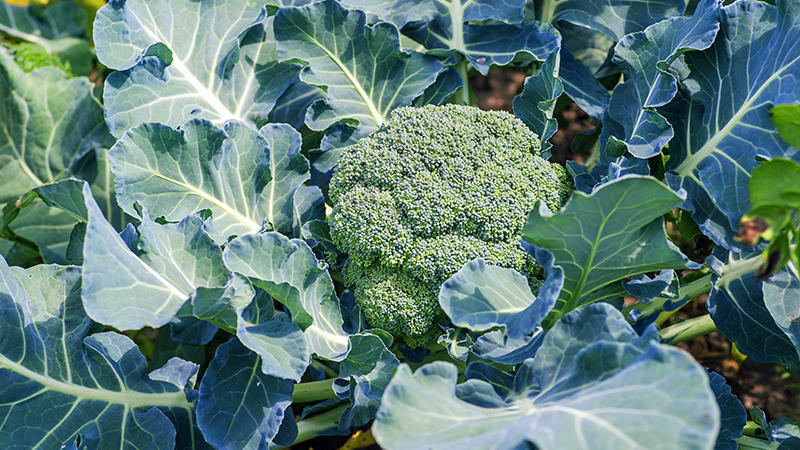Florida Strawberry Growers in Good Spirits After Fruitful Season

Agritech 2019 drew a solid turnout of strawberry growers and allied industry members to Plant City, FL.
Recently, I attended the Florida Strawberry Growers Association’s 37th annual Agritech education program and trade show in Plant City. The event had a great turnout of growers and allied industry to learn what’s new in berry production, technology, and markets.
I had a chance to talk with several growers and was happy to hear that most had a pretty good season. One commented, “A lot of growers finally made some money this year.”
Blockchain Is Coming
Ed Treacy, Vice President of Supply Chain and Sustainability for the Produce Marketing Association, gave us an update on blockchain and what growers and the industry need to do to prepare for the technology. Blockchain is basically an online, digital ledger that has been touted as a better way to execute food traceability and locate foodborne illness outbreaks more quickly.
Blockchain also is being favored because of its security, enabled by cryptography, which allows data to securely move through the supply chain at the same speed as the product. With blockchain, a produce item can be tracked from the farm, through distribution, to the store. In theory, that produce item could be traced back through the chain, from the store, to the farm almost instantaneously.
Treacy discussed Walmart’s pilot project with IBM’s blockchain technology called the Food Trust. In a proof of concept, Walmart traced a clamshell of sliced mango taken off the store shelf back to the farm where it was grown in 22 seconds. He said typical manual, mixed digital, and paper-based tracing averages six days, 18 hours, and 26 minutes to trace back to the farm. Blockchain could provide other benefits like identifying sources of food waste and work to reduce it. It also could record the sustainability of growing practices.
Walmart is getting ready to launch the technology and will require leafy greens sold in its stores to be on blockchain by September. And it’s not just Walmart in pilot projects with IBM. Driscoll’s, Dole, Unilever, Kroger, and other major players have pilots underway. He added the challenge will be to ensure the technology will be beneficial to all parts of the supply chain.
Treacy said there still are questions to be addressed using the technology, like who gets access to the data on the chain. How much will get shared with consumers? How will regulators have access to this information and use it while regulating?
He encouraged growers to consider getting involved in a pilot project to gain insights on how blockchain is being used and how it’s evolving. Like it or not, blockchain is coming. He added that now is the time to clean up your data and determine the best method to capture information at all points of growing operations.

The Florida Department of Agriculture and Consumer Services was on hand at Agritech to spread the word about the Food Safety Modernization Act. Leah Tapley (left) and Ashlee Stillwell (right) said farm inspections are to start soon. If you are a larger, leafy greens grower, you will be first in line.
Photo by Frank Giles
On the Production Side
Several talks during Agritech surrounded fumigation to control nematodes, diseases, and weeds in strawberry production. Retired UF/IFAS Nematologist Joe Noling noted in his presentation “You cannot just do nothing” when it comes to fumigation for pests, because the penalty to yields is just too high.
“The loss of a plant in the early season is $2.66 per plant,” Noling said. “If you incur a 10% reduction of stand, you are taking a loss of about $5,000 per acre in potential yield.”
Natalia Peres, a Professor of Strawberry Pathology with UF/IFAS, shared some emerging insights on Macrophomina causing crown rots. In fields where Macrophomina is a problem, she recommended a strong production program with crop termination and fumigation prior to planting. In addition, she recommended not to double-crop on the same plastic to help remove inoculum in the fields. If double-crop is used, she recommended that all crop debris is removed from the field after termination because the plants carry high levels of Macrophomina into the next season.
A local grower shared his experience with a field that suffered a 65% stand loss due to the fungus on his farm. Working with Peres and UF/IFAS, he followed a plan to reduce the problem.
“We backed off the ‘Radiance’ and planted ‘Sensation,’ which is less susceptible,” he said. “We did crop termination with a full rate of VAPAM (Sodium methyldithiocarbamate, AMVAC) and came back in August with full rate of K-PAM (Potassium N-methyldithiocarbamate, AMVAC). We still got a 30% reinfection of Macrophomina the second year, even though we changed varieties, nursery source, and everything else.”
The belief was the reinfection rate was spurred by plants from the previous year being left in the field. He noted last year before planting on a double-crop year, he had crews go through the field, remove all the strawberry plants, and haul them off in trash bags. The labor costs were about $350 to $400 per acre.
“That’s expensive, but what does it cost you to lose 65% of your crop?” he asked. “After taking these steps in combination, we had a total mortality rate of 2.5% in that field. I don’t really know how much was Macrophomina or Phytophthora, but when I am only losing 2.5%, I am happy. Removing those plants seemed to do the trick.”










